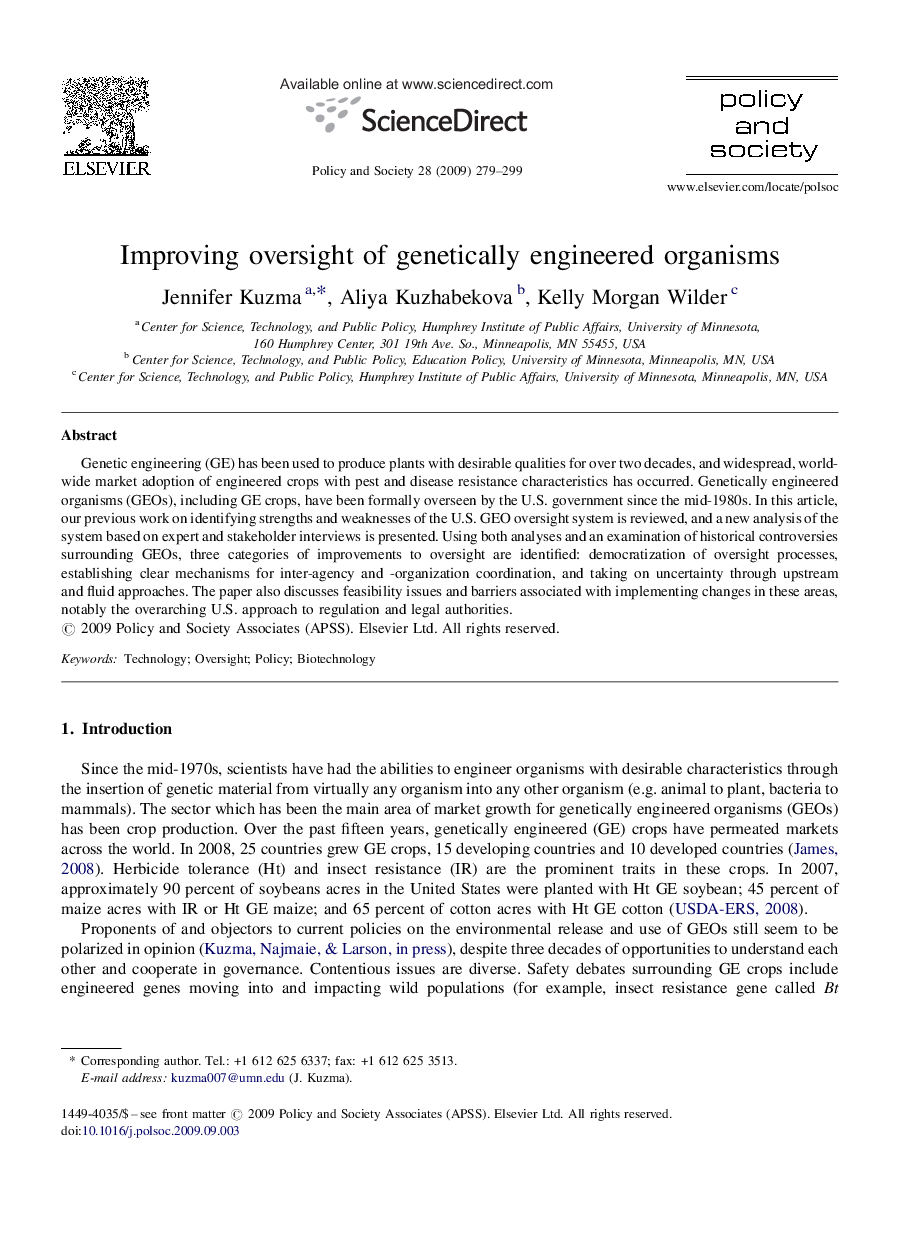| Article ID | Journal | Published Year | Pages | File Type |
|---|---|---|---|---|
| 1061722 | Policy and Society | 2009 | 21 Pages |
Abstract
Genetic engineering (GE) has been used to produce plants with desirable qualities for over two decades, and widespread, world-wide market adoption of engineered crops with pest and disease resistance characteristics has occurred. Genetically engineered organisms (GEOs), including GE crops, have been formally overseen by the U.S. government since the mid-1980s. In this article, our previous work on identifying strengths and weaknesses of the U.S. GEO oversight system is reviewed, and a new analysis of the system based on expert and stakeholder interviews is presented. Using both analyses and an examination of historical controversies surrounding GEOs, three categories of improvements to oversight are identified: democratization of oversight processes, establishing clear mechanisms for inter-agency and -organization coordination, and taking on uncertainty through upstream and fluid approaches. The paper also discusses feasibility issues and barriers associated with implementing changes in these areas, notably the overarching U.S. approach to regulation and legal authorities.
Related Topics
Social Sciences and Humanities
Social Sciences
Geography, Planning and Development
Authors
Jennifer Kuzma, Aliya Kuzhabekova, Kelly Morgan Wilder,
